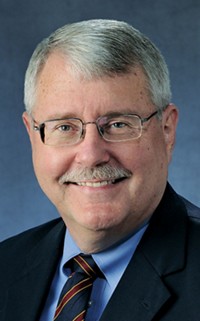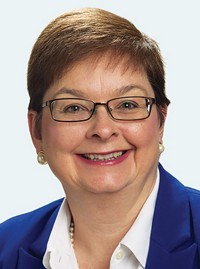Advertisement
Grab your lab coat. Let's get started
Welcome!
Welcome!
Create an account below to get 6 C&EN articles per month, receive newsletters and more - all free.
It seems this is your first time logging in online. Please enter the following information to continue.
As an ACS member you automatically get access to this site. All we need is few more details to create your reading experience.
Not you? Sign in with a different account.
Not you? Sign in with a different account.
ERROR 1
ERROR 1
ERROR 2
ERROR 2
ERROR 2
ERROR 2
ERROR 2
Password and Confirm password must match.
If you have an ACS member number, please enter it here so we can link this account to your membership. (optional)
ERROR 2
ACS values your privacy. By submitting your information, you are gaining access to C&EN and subscribing to our weekly newsletter. We use the information you provide to make your reading experience better, and we will never sell your data to third party members.
Comment
Strategic portfolio optimization and innovation within ACS
by Natalie A. LaFranzo, ACS director-at-large
February 27, 2022
| A version of this story appeared in
Volume 100, Issue 8

If you’ve been engaged with the American Chemical Society for even a short period of time, you may have noticed there is no shortage of acronyms we use. One of the newest acronyms within the society is PEVOP, which stands for Portfolio Evaluation and Optimization. PEVOP describes both a process and a subcommittee within the Committee on Budget and Finance. ACS governance leaders and staff developed the PEVOP process using input from the ACS Executive Leadeship Team and piloted the process in 2021.
This new process replaced the previous Society Program Portfolio Management (SPPM) process, which ran from 2015 to 2020 and was preceded by the Program Review Advisory Group process, which started in 2006. So what does PEVOP accomplish, and how is it different from past approaches?
The PEVOP process creates a strategic goal–centered, portfolio-level summary that includes all society programs. This is in contrast to the SPPM process, which focused only on a select group of programs at a highly detailed level. Annually, the PEVOP subcommittee, in collaboration with ACS staff leaders, completes a comprehensive review of a set of portfolios aligned to one or two ACS strategic goals. During this review, the subcommittee discusses the key priorities, budget allocation, and metrics associated with each portfolio and focuses on impact, resource allocation, and fiscal responsibility. The team also discusses whether focus areas and investments should be adjusted on the basis of external change drivers, business goals, or member needs. This process allows ACS staff and leadership to manage day-to-day programmatic decisions, and PEVOP provides a venue for more holistic, big-picture discussions surrounding the strategic decisions impacting the ACS operating budget.
During the 2021 pilot year, the subcommittee successfully evaluated goal 3 in the ACS Strategic Plan, “Support excellence in education.” The streamlined process yielded insightful discussions and collaboration between staff and volunteers and was less time consuming than previous approaches. Key themes that were acknowledged as opportunities for growth within ACS included the globalization of chemistry and the society, the need for culturally sensitive materials and imagery, and the growing prevalence of online engagement and virtual learning. In 2022, PEVOP will continue evaluating a subset of the remaining strategic goals and will focus on goal 1, “Provide information solutions,” and goal 4, “Communicate chemistry’s value.” Over time, this process will yield a holistic view of the society’s portfolios—a useful tool for identifying gaps, redundancies, and opportunities for collaboration between units across the society.
The new concept and program-funding request procedure of the previous SPPM was recognized as an important opportunity for improvement. Improvements were identified to make the process more transparent, ensure an unbiased review of ideas, provide support to applicants who may be new to ACS’s governance or structure, and promote more targeted solicitation of new ideas that align with gaps and opportunities to address our strategic goals and the direction set for the society by the Strategic Planning Committee.
And so, in collaboration with the Strategic Planning Committee, the subcommittee has developed a revised, new idea process that addresses each of these goals. This process will be launched in early 2022, and a working group will accept new ideas on a rolling basis.
In pursuit of more deliberate innovation centered on solving key challenges in chemistry, the committees have identified “Enhancing trust in science, chemistry, and chemists” as a strategic focus area for 2022: “By highlighting the contributions of chemists in solving challenges related to environmental sustainability, human health, and other areas of global need, we can rebuild where needed and continue to enhance the public’s trust in science. We seek your ideas for impactful evergreen campaigns, sustainable programs, and new or unique ways of using communications, education, and outreach efforts. Programs that highlight not only the value of chemistry, but the humanity of the chemists who empower the work are preferred.”
As a member, you may have ideas on new program offerings or expansions that would positively impact your communities. I encourage you to connect with your governance units (local section, international chemical science chapter, technical division, or committee) to begin to refine the scope, budget, and impact of your idea. In the coming months, PEVOP will share more information on how to submit your ideas, and it looks forward to supporting you in developing and implementing those ideas. It’s important to note that this process is designed specifically for society-level programs, so if you have an idea that might be more limited in scope, you can get started immediately with some of the other funding opportunities available within ACS, such as innovative project grants, seed grants, and global innovation grants, found at www.acs.org/content/acs/en/funding.html.
As the world’s largest scientific society devoted to a single discipline, ACS must continue to serve the needs of its members and the chemistry community as their needs evolve and change over time. The PEVOP process embodies one of the unique and powerful aspects of ACS: collaboration between staff and volunteers that is built on trust and a shared vision of improving all people’s lives through the transforming power of chemistry.
Views expressed are those of the author and not necessarily those of C&EN or ACS.





Join the conversation
Contact the reporter
Submit a Letter to the Editor for publication
Engage with us on Twitter